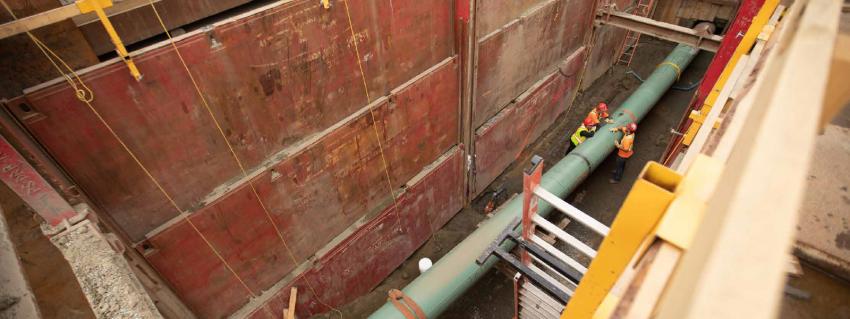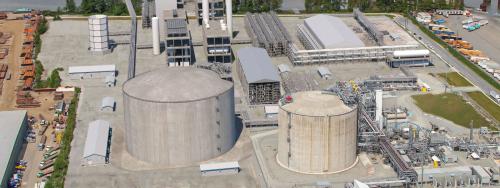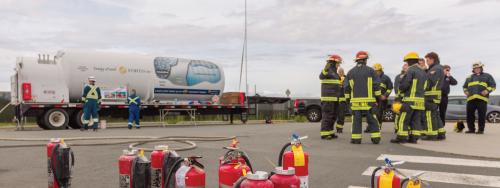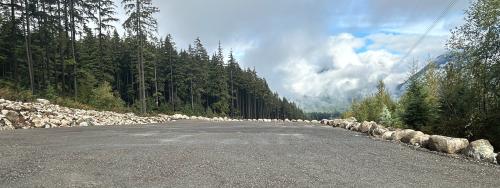John Quinn, FortisBC’s supervisor of pipelines and engineering, says the route the gas line will take, along major traffic corridors and across busy arterial routes, helped determine which construction methods will be used by the contractor.
“We’re working beside houses, businesses and intersections,” he says. “This paints a picture of our priorities. We need to work in such a way that allows people to use the sidewalks, maintains access to businesses and keeps traffic moving.”
With the safety of the public and FortisBC crews top of mind—along with the space limitations of an urban area—we’ll use two main construction methods to get the job done safely, and as quickly as possible.
Open cut construction
We’ll use open cut, or traditional trench construction, for the vast majority of the project. Simply put, we dig an open trench and lower the gas line into it.
Open cut is a standard choice for gas line construction because of its flexibility. It can be done safely and efficiently within the smallest amount of space compared to other types of construction. At the project site you’ll see heavy equipment such as excavators, and long lengths of gas line waiting to be installed.
Track bore trenchless construction
In locations where the gas line needs to cross a major intersection, instead of digging an open trench, we’ll bore a tunnel under the road and push the gas line through.
Trenchless underground construction keeps the intersection open and minimizes traffic disruptions.
The crossings, especially at intersections, will be short, so “track bore” trenchless construction will be used most of the time. It’s the best method for crossings because it’s the simplest and requires the least amount of space.
The track bore machine bores a tunnel, an excavator lowers a section of gas line into it and the track bore machine pushes it under the road. Compared to open cut construction, you won’t see as much activity at the project site because it mostly takes place underground.
Read more about the FortisBC Gas Line Upgrades and get updates about construction activities and road and lane closures.



